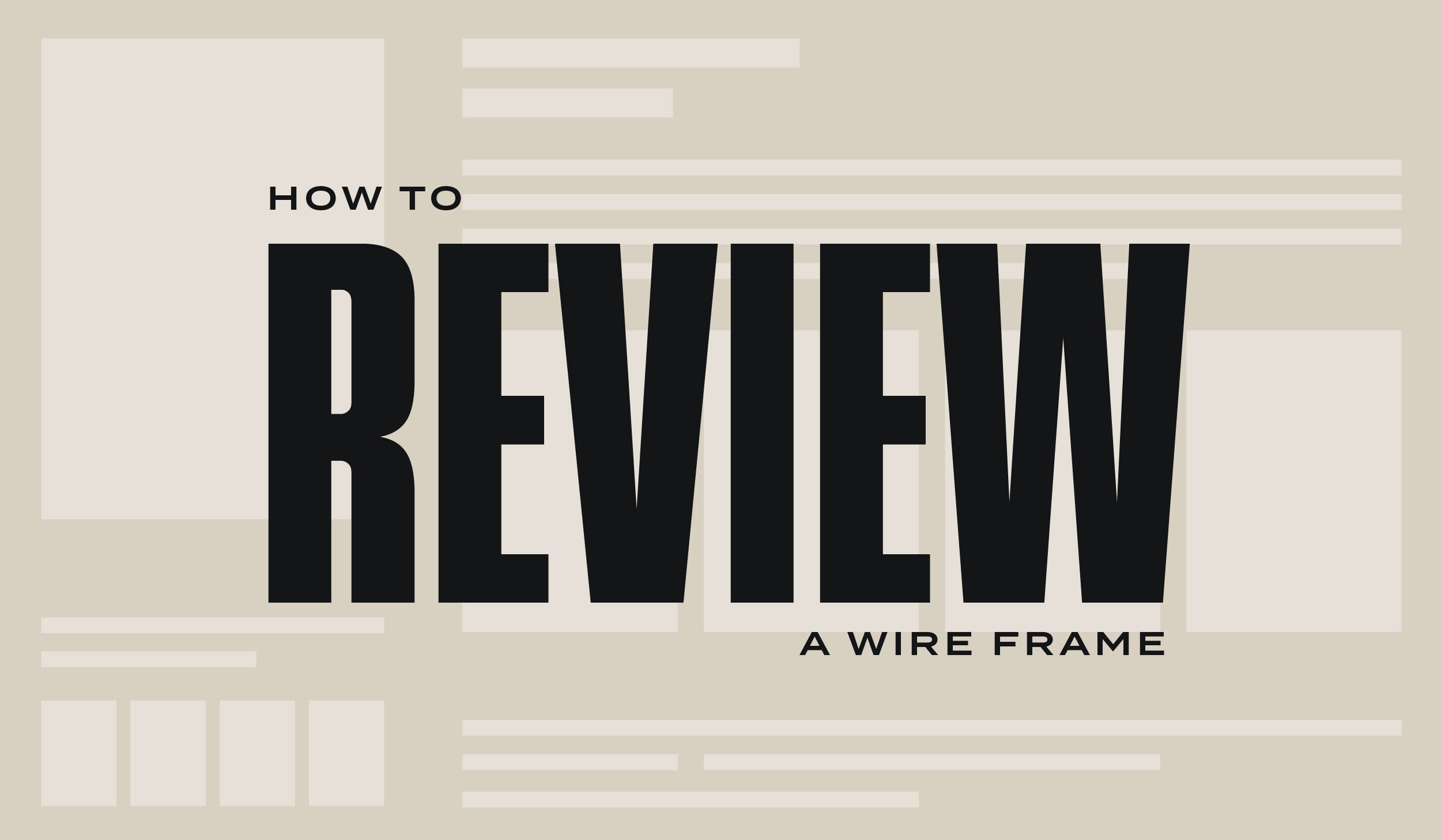BLOG How to Review a Wireframe
How to Review a Wireframe
POSTED BY The Prim Pack | Oct 23, 2024

Wireframes: the unsung heroes of web design.
They're the secret sauce that prevents costly miscommunications, ensures seamless project execution, and makes designers and developers alike breathe a collective sigh of relief.
At Primitive, we've mastered the art of wireframing as part of our Growth-Driven Design (GDD) process. Our team has seen firsthand how wireframes transform the web design landscape. By distilling complex ideas into simple, intuitive layouts, wireframes pave the way for successful website launches and ongoing optimization.
But what makes wireframes so effective? And how can you ensure your wireframe review process is yielding the best possible results?
In this blog, we'll dive into the essentials of wireframing, covering:
- What is a Wireframe? (Yes, it's more than just a fancy sketch.)
- How to Review a Wireframe (Because a good review is just as important as the wireframe itself.)
Let's jump in.
What is a Wireframe?
Wireframes are the architectural blueprints of web design, providing a strategic foundation for your digital presence. As Digital.gov accurately defines, wireframes are "two-dimensional illustrations of a page's interface" that prioritize content, functionality, and user behavior.
However, this definition only scratches the surface.
Wireframes are more than just simple layouts – they're a critical tool for:
- Clarifying information architecture and content hierarchy.
- Defining interactive elements and user experience (UX) pathways.
- Establishing a clear visual flow and page structure.
- Informing design decisions and feature prioritization.
Think of wireframes as a sitemap for your website's user experience. By stripping away visual distractions, wireframes reveal the underlying structure and functionality of your website, allowing you to:
- Identify potential usability issues.

- Optimize content placement and flow.
- Streamline navigation and user journeys.
As we emphasize at Primitive, wireframes intentionally omit styling, color, and graphics to focus on the essential elements that drive user engagement and conversion. This deliberate simplicity ensures that your design decisions are guided by functionality, usability, and business objectives – not just aesthetics.
How To Review a Wireframe: 5 Action Items
Reviewing wireframes is an art that requires a strategic approach. At Primitive, we've distilled our expertise into five essential action items to ensure a seamless review process.
1. Focus on the Big Picture
When reviewing a wireframe, ask yourself:
- Does the layout align with your business objectives?
- Are key topics and messaging priorities clearly represented?
- Is the information architecture intuitive and user-friendly?
Don't get bogged down in minor details. Focus on the overall structure and content flow.
Example: Check if an About page wireframe includes essential sections, such as employee bios, mission statements, or customer testimonials.
2. Don’t Expect Design Details
Wireframes are intentionally minimalist, focusing on layout and functionality.
When reviewing a Primitive wireframe, you'll see labeled sections with descriptive names like "Hero," "Why," or "Carousel." These sections might include cue words or notes, such as "Talk about how great your company is here" or "Add photos with actual people who work there." but they won’t be detailed, so it’s best to keep those expectations on deck for further down the road.
As a solid rule of thumb, avoid expecting:
- Visual aesthetics.
- Typography.
- Color schemes.
Instead, focus on:
- Content hierarchies.
- Module relationships.
- Functional notes.
3. Don’t Edit Copy
This note is a little more self-explanatory; resist the urge to edit or refine copy at this stage.
Depending on your strategist, you might see a few headlines they thought of or notes about what the copy will contain based on your initial meeting.
What you should be looking at, however, is topic, length, and maybe even tone indicators. The content should tell you what the copywriter plans on writing about.
4. Pay Attention to Detail
Study the wireframe’s details to decide if key ideas make sense to you.
- Does the content flow feel organic, logical, or full of friction?
- Are there any potential navigation issues?
- Do the design patterns make sense to you?
All of these details impact your brand's storytelling so it’s wise to take them all into consideration. A well-structured wireframe ensures a cohesive user experience, and the better the experience for the audience, the longer they’ll linger on your website.
5. Ask Your Questions
This is the moment of truth. The wireframe review is your last chance to scrutinize your webpage before it enters the design and copy phase. Don't let any doubts or uncertainties slip by – now's the time to speak up.
Ask us anything:
- What's the purpose of this module?
- What topic will this copy cover?
- How will this function work?
This is your website, and we want to get it right. Your involvement at this stage is crucial and your input matters. By addressing questions and concerns now, we can avoid costly revisions and delays, getting your website live sooner.
We promise, if you truly review a wireframe, the end product will better reflect you and your brand. And when you’re paying to build your business’s online storefront, that matters.
SHARE THIS POST:

About the writer, The Prim Pack
Primitive is a full-service digital agency specializing in strategy, branding, web development, and technology solutions. With a passion for innovation and a commitment to helping businesses grow, our team crafts digital experiences that make an impact.
